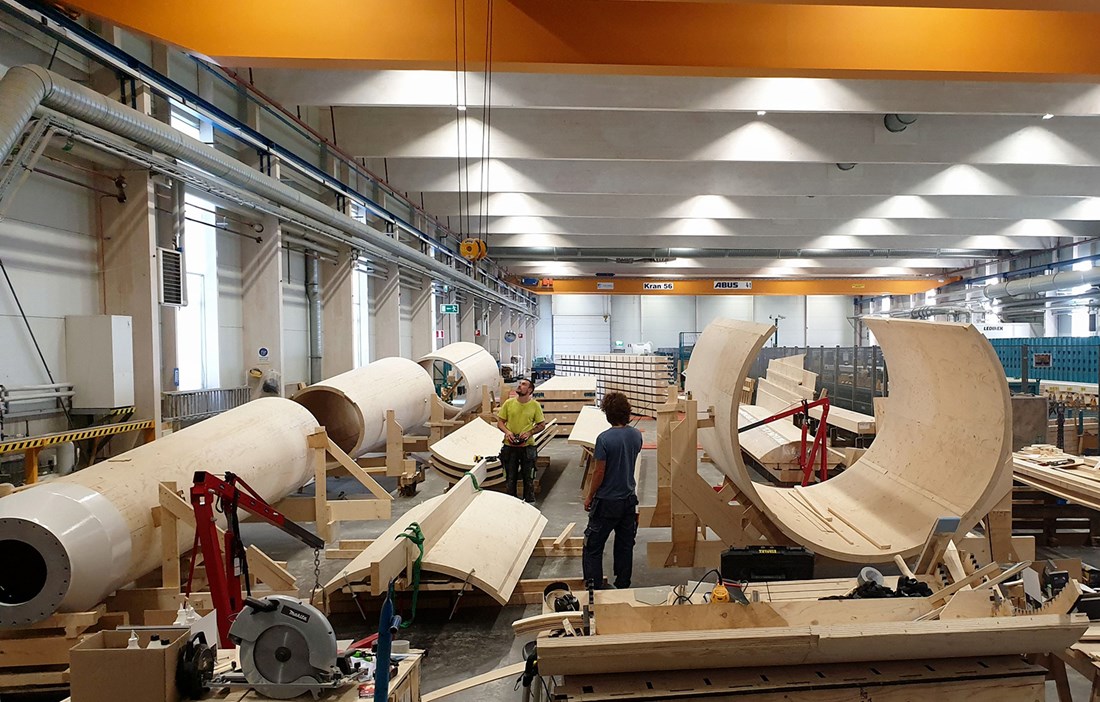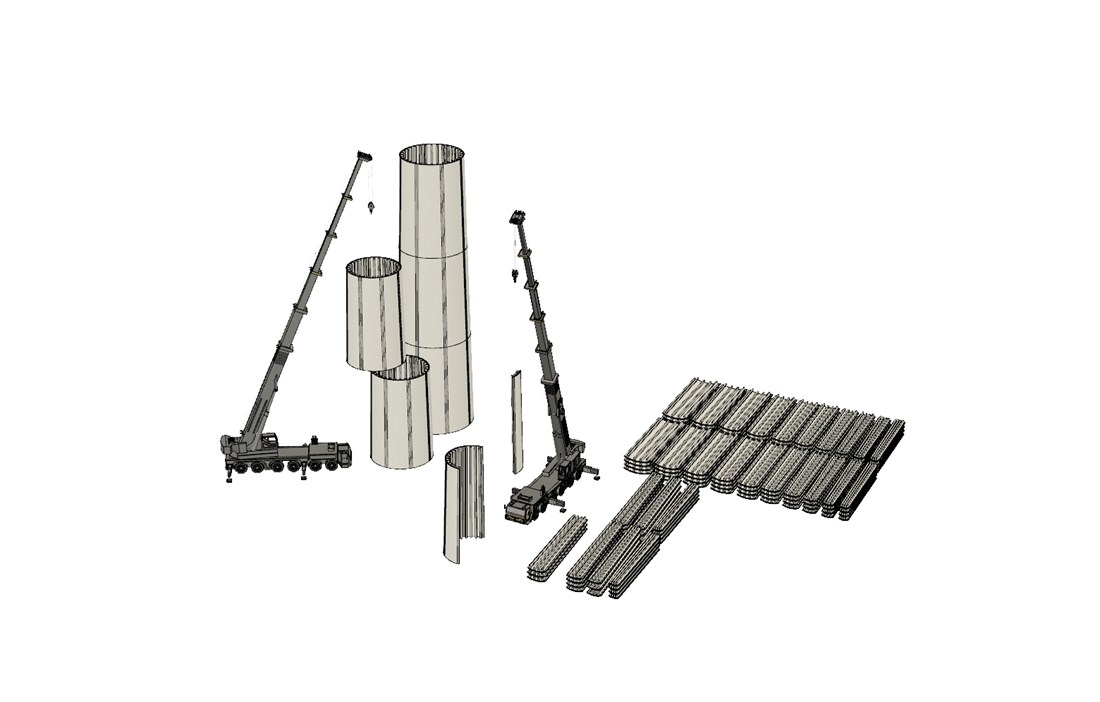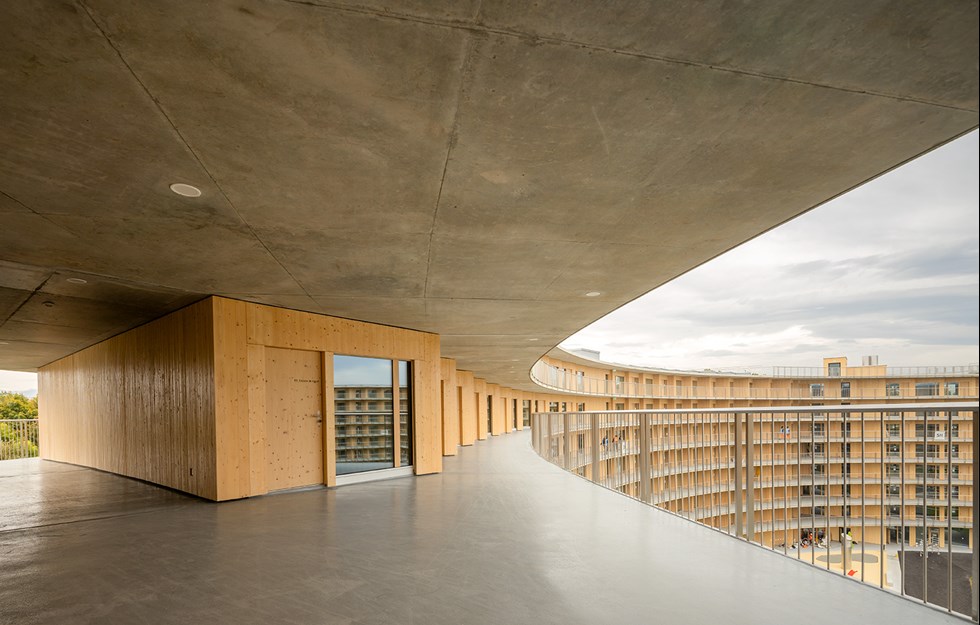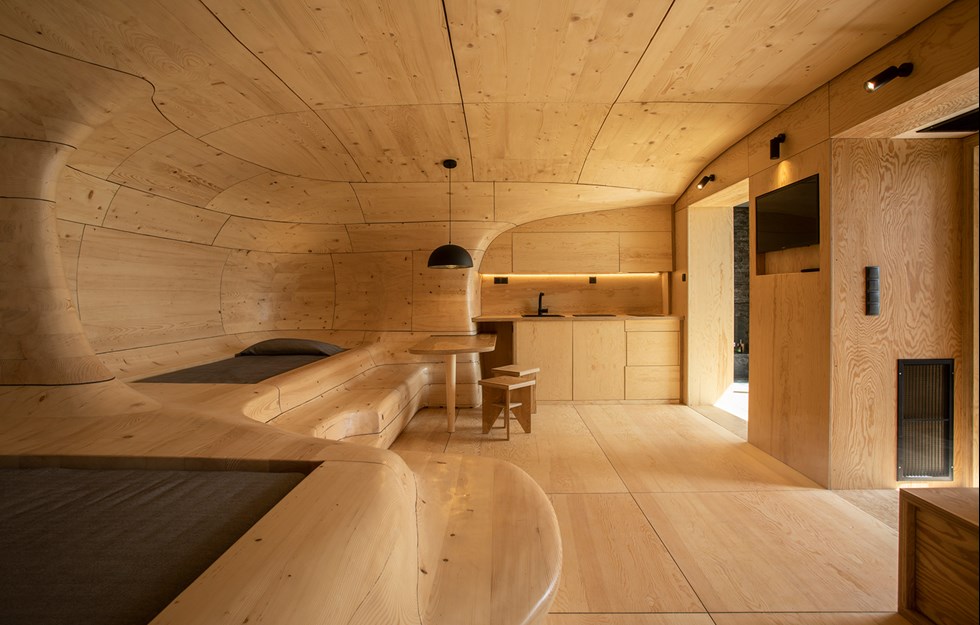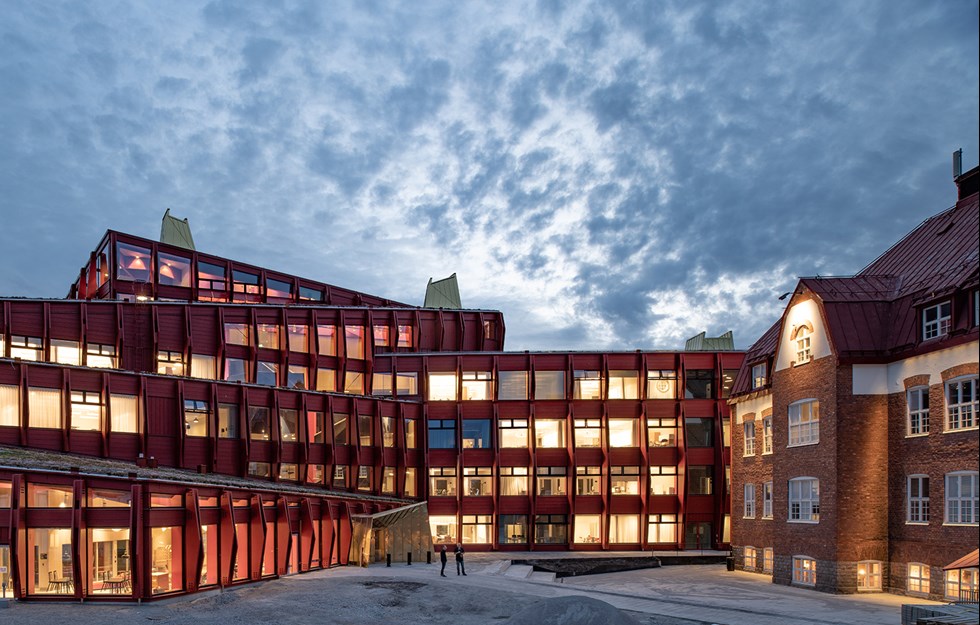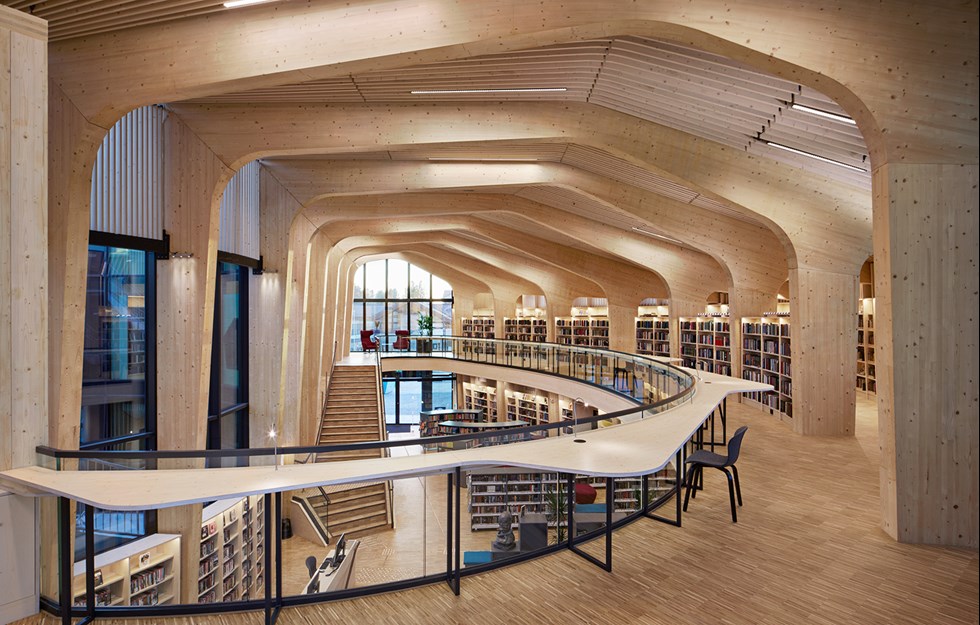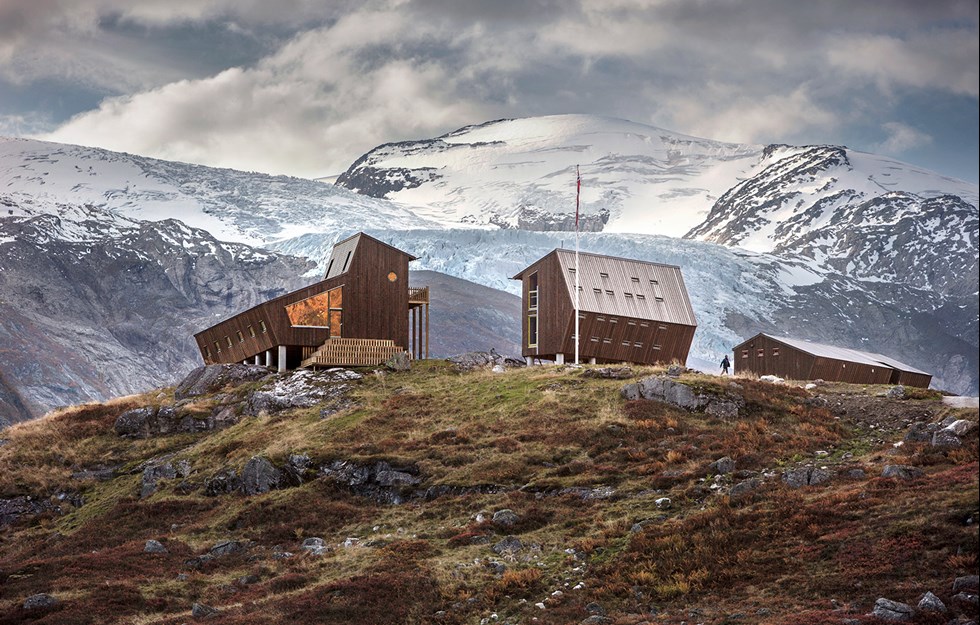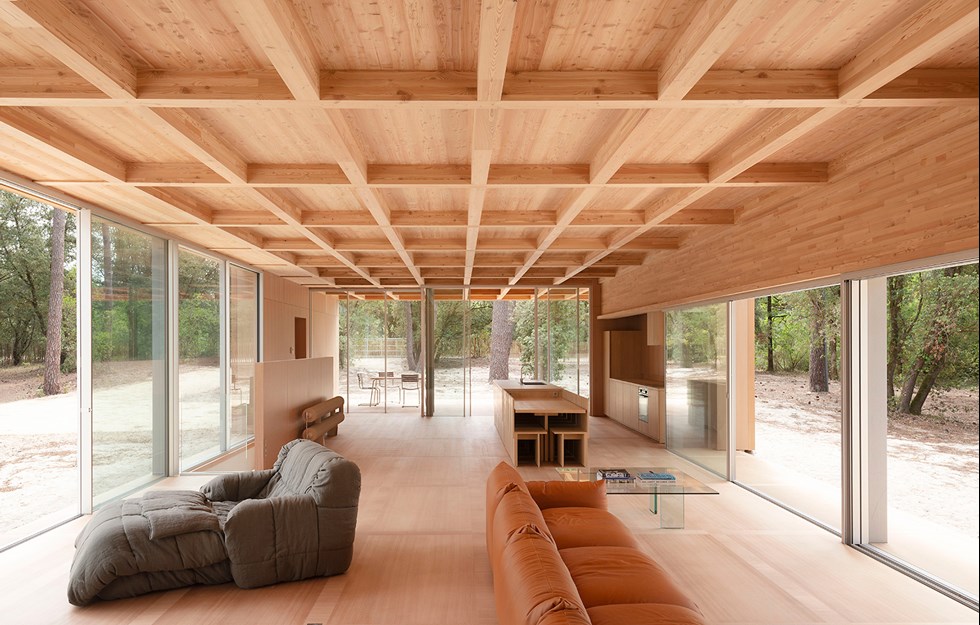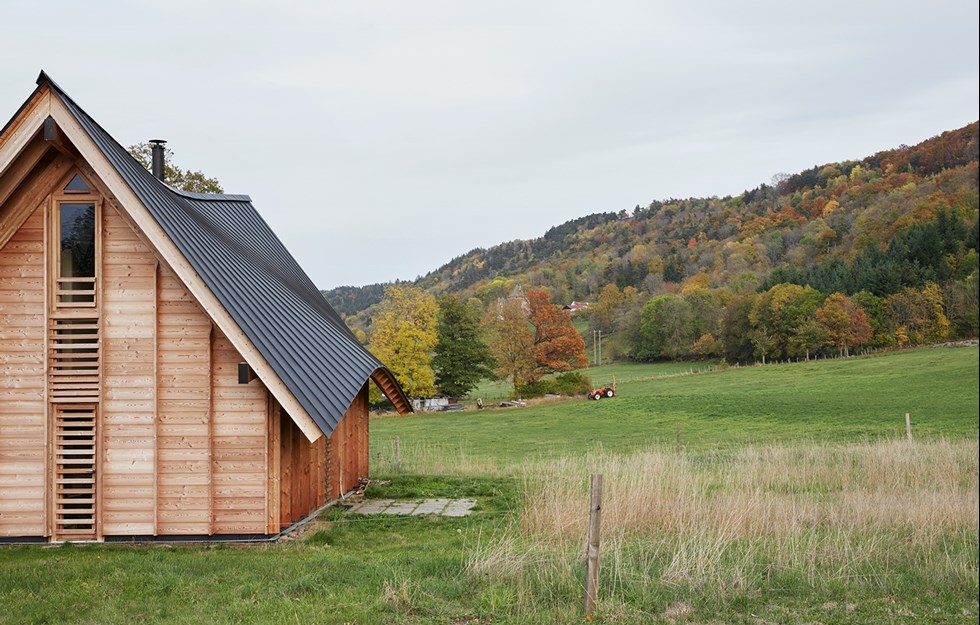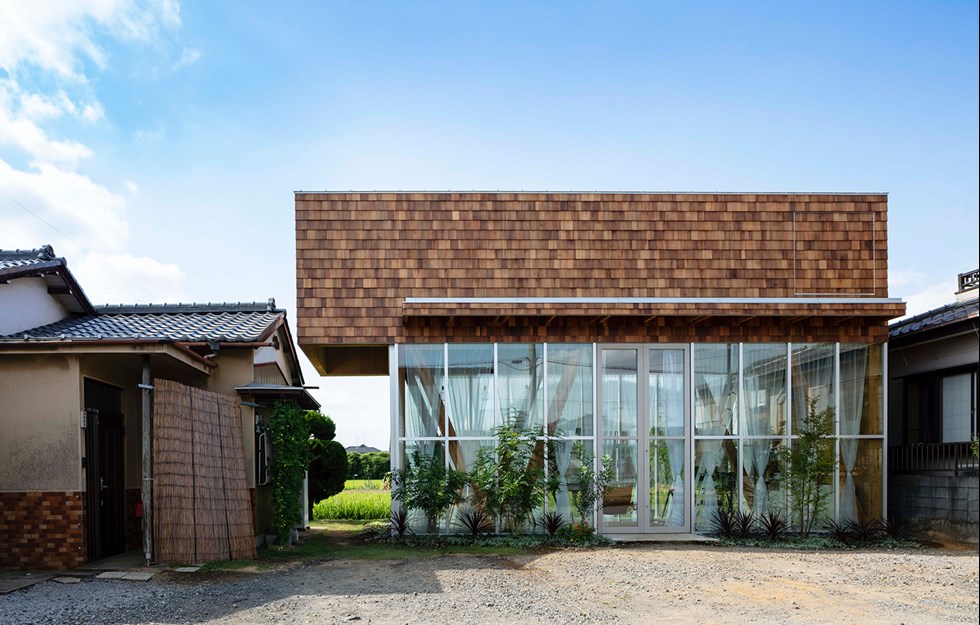Wind turbines allow us to take the kinetic energy in the air and convert it into green electricity. But wind power can be made even more eco-friendly by using taller towers to capture stronger and more consistent winds, and by using more renewable construction materials. Modvion’s innovative modular turbine tower in wood kills two birds with one stone. The benefit of modules is that they are easier to prefabricate in a factory and then transport to the construction site on public roads. The benefits of wood as a material include good mechanical properties, relatively low weight and low cost per unit of load-bearing capacity, not to mention eco-friendly production and processing.
In partnership with several other contributors (including Moelven, Metsä Wood, Teknos, Chalmers and RISE), Modvion has developed a concept to build tall wooden towers using tried and tested construction products: wood-based composite products made from laminated veneer lumber (LVL). Rigs are used to shape the modules into a conical tube (fig. 1). According to calculations, the LVL walls for a 100 metre tower need to be up to 400 millimetres thick, comprising over 130 layers of spruce veneer.
On the site where the turbine will be located (or in the factory for the prototype tower), four modules are assembled into one tubular section that can be up to 25 metres tall and over 10 metres in diameter. The sections are then stacked up on top of each other (fig. 2). Modvion joins these sections using inset steel plates glued into the wood walls. Inserting thin, perforated steel plates into slits creates an adhesive matrix with many small “glue studs” (fig. 3). This is a new connection technology that is strong and stiff, but requires precision implementation.
Over the course of several collaborative projects, the key challenges mentioned in the fact box have been examined one by one. Solutions have then been developed using a combination of calculations and tests. The relevant standard for wooden buildings (SS-EN 1995-1-1) lists a number of methods for verifying the strength and stiffness of the towers. Models for calculating the turbine loads and scenarios that affect the loads on the tower are described in the standards for wind turbines (e.g. IEC 61400-1). The Eurocode for wooden bridges also provides information on the fatigue strength of wood components exposed to a cyclical load of constant amplitude.
Calculations are not always enough, and so testing is required on different scales and in different climates, particularly for new products and applications. Great emphasis is placed on verifying the fatigue properties of wood, which are not as well known as the properties of steel, for example. Old wooden bridges and church towers demonstrate that this material can handle cyclical loads over a long period, but the research has not yet led to standardised knowledge. Studies show that wood’s fatigue strength depends not only on the number of cycles, but also on the duration of the total load. To optimise and verify the designs, a series of fatigue tests have therefore been performed in a laboratory to check the wood elements and glued joints at different stress levels. The 30 metre high prototype (fig. 4) that was erected in spring 2020 is also fitted with moisture sensors and accelerometers that are monitored at all times.
The German company Timber Tower built a 100 metre tall, octagonal prototype in CLT that was put into operation almost 10 years ago. It has been a success in engineering terms, but not commercially, since the technical solution involving large internal beams resulted in high production costs. Since then, very little has happened regarding wooden towers for wind turbines.
Now Modvion is investing in developing the concept for towers of over 100 metres.
text Pierre Landel & Anders Wickström, RISE

